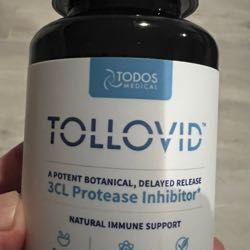The FASEB Journal Dysfunctionally phosphorylated
Post# of 30081

Dysfunctionally phosphorylated type 1 insulin receptor substrate in neural-derived blood exosomes of preclinical Alzheimer’s disease
Dimitrios Kapogiannis*, Adam Boxer†, Janice B. Schwartz‡§, Erin L. Abner¶, Arya Biragyn*, Umesh Masharani‡, Lynda Frassetto‡, Ronald C. Petersen#, Bruce L. Miller† and Edward J. Goetzl*,‡§,1
+ Author Affiliations
*Intramural Research Program, National Institute on Aging, Baltimore, Maryland, USA;
†Memory and Aging Center, Department of Neurology, and
§Department of Medicine, University of California–San Francisco Medical Center, San Francisco, California, USA;
‡Jewish Home of San Francisco, San Francisco, California, USA;
¶Sanders-Brown Center on Aging, University of Kentucky, Lexington, Kentucky, USA; and
#Mayo Clinic, Rochester, Minnesota, USA
↵1Correspondence: UCSF Geriatric Research Center, 1719 Broderick St., San Francisco, CA 94115, USA. E-mail: edward.goetzl@ucsf.edu
Abstract
Insulin resistance causes diminished glucose uptake in similar regions of the brain in Alzheimer’s disease (AD) and type 2 diabetes mellitus (DM2). Brain tissue studies suggested that insulin resistance is caused by low insulin receptor signaling attributable to its abnormal association with more phospho (P)-serine-type 1 insulin receptor substrate (IRS-1) and less P-tyrosine-IRS-1. Plasma exosomes enriched for neural sources by immunoabsorption were obtained once from 26 patients with AD, 20 patients with DM2, 16 patients with frontotemporal dementia (FTD), and matched case control subjects. At 2 time points, they were obtained from 22 others when cognitively normal and 1 to 10 yr later when diagnosed with AD. Mean exosomal levels of extracted P-serine 312-IRS-1 and P-pan-tyrosine-IRS-1 by ELISA and the ratio of P-serine 312-IRS-1 to P-pan-tyrosine-IRS-1 (insulin resistance factor, R) for AD and DM2 and P-serine 312-IRS-1 and R for FTD were significantly different from those for case control subjects. The levels of R for AD were significantly higher than those for DM2 or FTD. Stepwise discriminant modeling showed correct classification of 100% of patients with AD, 97.5% of patients with DM2, and 84% of patients with FTD. In longitudinal studies of 22 patients with AD, exosomal levels of P-serine 312-IRS-1, P-pan-tyrosine-IRS-1, and R were significantly different 1 to 10 yr before and at the time of diagnosis compared with control subjects. Insulin resistance reflected in R values from this blood test is higher for patients with AD, DM2, and FTD than case control subjects; higher for patients with AD than patients with DM2 or FTD; and accurately predicts development of AD up to 10 yr prior to clinical onset.—Kapogiannis, D., Boxer, A., Schwartz, J. B., Abner, E. L., Biragyn, A., Masharani, U., Frassetto, L., Petersen, R. C., Miller, B. L., Goetzl, E. J. Dysfunctionally phosphorylated type 1 insulin receptor substrate in neural-derived blood exosomes of preclinical Alzheimer’s disease.
insulin resistance dementia senescence
Footnotes
This article includes supplemental data. Please visit http://www.fasebj.org to obtain this information.
Received August 4, 2014.
Accepted September 23, 2014.
© FASEB
 (0)
(0) (0)
(0)